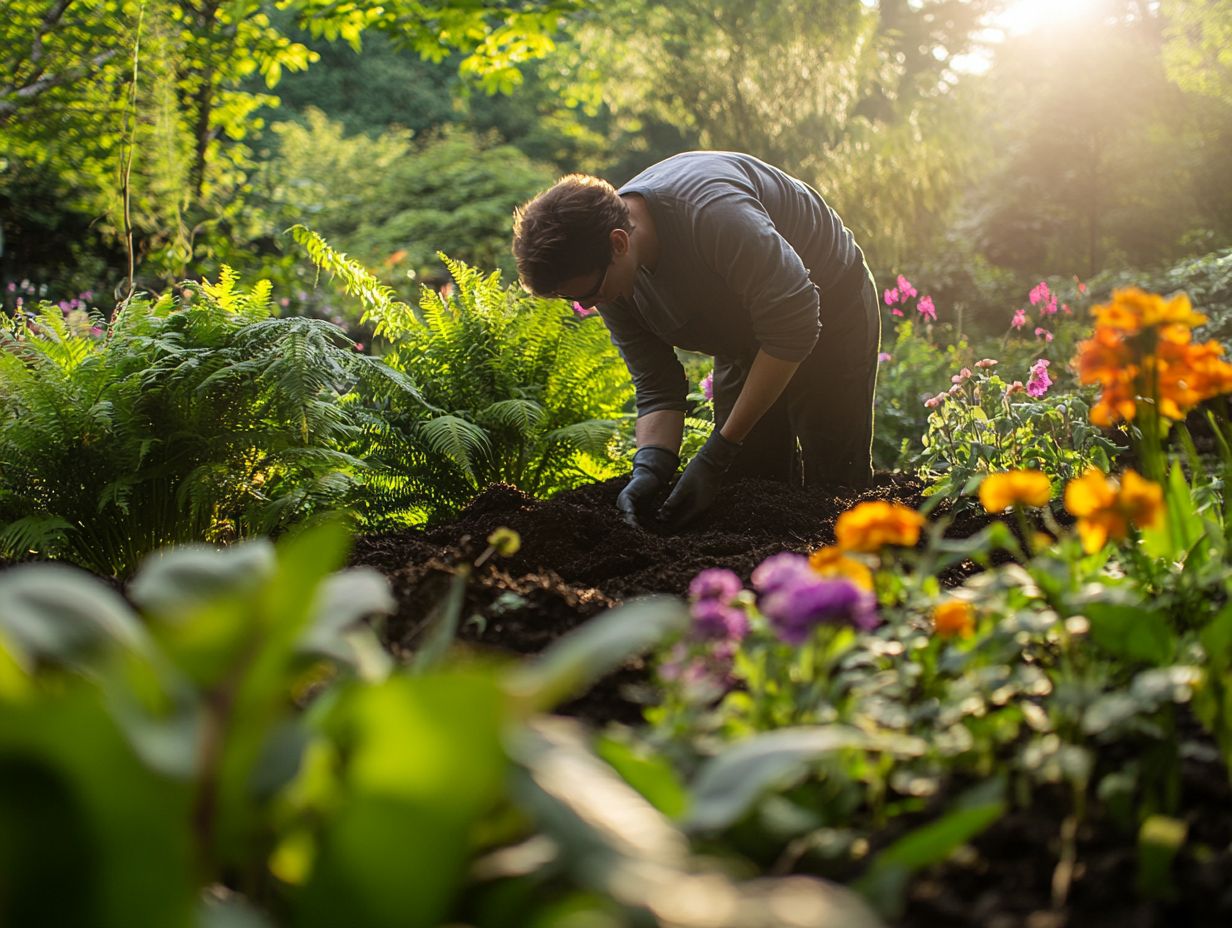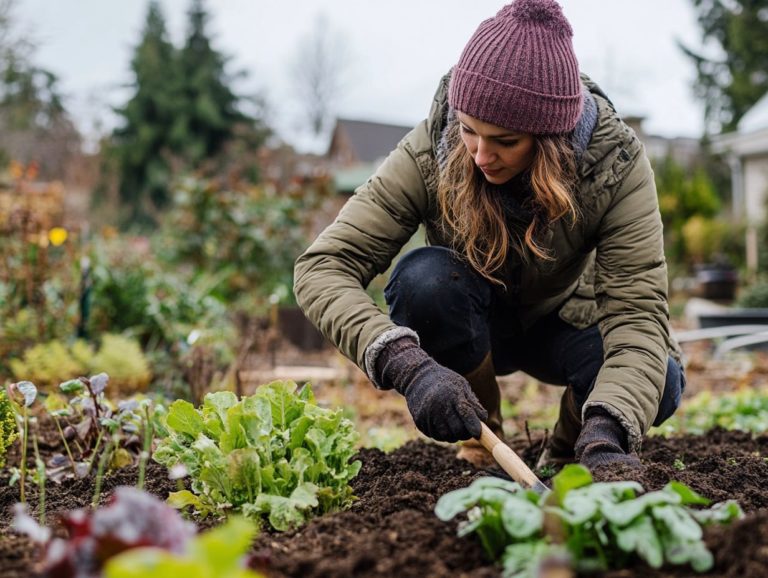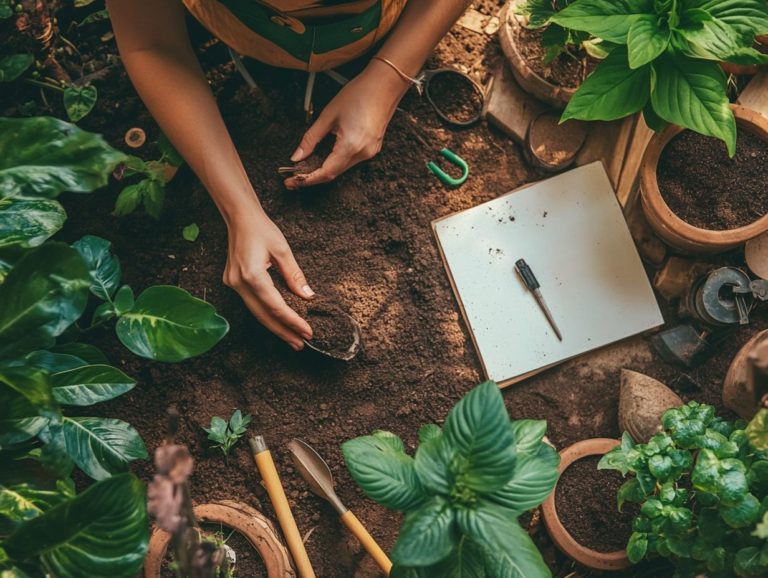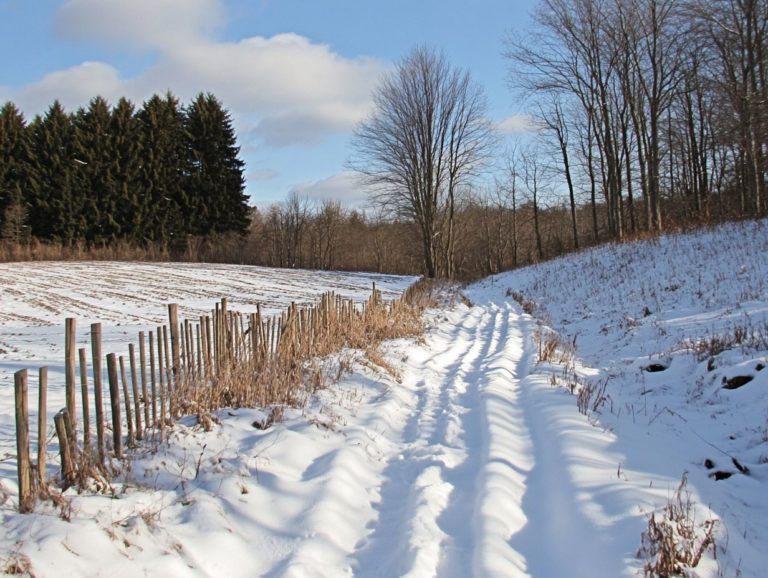How to Adjust Soil for Acid-Loving Plants
Soil pH is a key factor for gardening success. It directly impacts nutrient availability for your plants.
If you want to grow acid-loving plants, understanding soil pH is essential. This article covers soil pH basics, highlights popular acid-loving plants, and provides practical tips for adjusting your soil’s pH level.
With the right knowledge and techniques, you can create the perfect environment for acid-loving plants to thrive.
Contents
- Key Takeaways:
- Understanding Soil pH Levels
- Identifying Acid-Loving Plants
- Methods for Adjusting Soil pH
- Testing and Monitoring Soil pH
- Tips for Maintaining Acidic Soil
- Frequently Asked Questions
- What are acid-loving plants?
- Why do acid-loving plants require specific soil conditions?
- How do I know if my soil is too alkaline for acid-loving plants?
- What are some common methods for adjusting soil acidity?
- When is the best time to adjust soil for acid-loving plants?
- Can I grow acid-loving plants in containers?
Key Takeaways:

- Acid-loving plants thrive in soil with a pH of 5.0-6.5.
- Add compost and pine needles to lower soil pH.
- Regular soil pH testing helps maintain a healthy garden.
Understanding Soil pH Levels
Soil pH levels are crucial for your gardening success. They directly influence the availability of important nutrients for plant growth.
If your soil is acidic (below 6 pH), many plants might struggle to absorb nutrients. However, acid-loving plants like rhododendrons, azaleas, and magnolias will thrive.
Conducting a soil test is a great way to assess acidity levels. This allows you to make informed amendments for a perfect growing environment.
What is Soil pH and Why is it Important?
Soil pH is a scale that measures how acidic or alkaline your soil is. This measurement dictates nutrient availability and impacts plant health.
When pH is more acidic, it often boosts nutrient availability for acid-loving species like blueberries and azaleas. On the other hand, many plants may struggle to absorb important minerals in very acidic or alkaline soils.
Understanding pH levels is vital for any gardener. It determines which plants will thrive in your soil conditions.
Identifying Acid-Loving Plants
Identifying acid-loving plants is key for gardeners wanting to grow a thriving garden in acidic soil. These plants do well in soil with a pH lower than 6.
Knowing their needs helps you create a vibrant garden.
Common Plants that Thrive in Acidic Soil
Common acid-loving plants include rhododendrons, azaleas, hydrangeas, and blueberries. Each brings unique charm to your garden.
These plants not only add beautiful blooms and tasty fruits; they also improve soil health. Rhododendrons and azaleas help make the soil more acidic, promoting beneficial microbes.
To care for them, ensure they have enough moisture and apply organic mulch. This keeps the soil acidic and helps your garden flourish!
Methods for Adjusting Soil pH

Adjusting soil pH is an essential step in creating ideal gardening conditions, especially for acid-loving plants. You can achieve this by employing various methods, such as:
- incorporating organic amendments,
- making chemical adjustments,
- conducting regular soil tests.
Using Natural Amendments
Using natural amendments is a smart, eco-friendly approach to adjusting soil pH. This method enhances soil health and delivers essential nutrients to your plants. These amendments typically include materials like compost, coffee grounds, and peat moss.
Take compost, for example. It enriches your soil with organic matter and helpful organisms that improve soil health, improving its structure and water retention while aiding in pH balance.
Then there are coffee grounds often overlooked but incredibly valuable. They can lower pH thanks to their acidic properties and serve as a slow-release nitrogen source, nourishing your plants over time.
Peat moss, meanwhile, excels at increasing soil acidity and moisture retention, making it the perfect companion for acid-loving plants.
To apply these amendments, mix them into the top few inches of soil or create a top dressing. You’ll see amazing improvements in plant vitality and growth throughout the seasons. Regular use will lead to a healthier and more productive garden ecosystem, transforming your outdoor space into a flourishing paradise.
Adding Chemical Amendments
Incorporating chemical amendments like aluminum sulfate, iron sulfate, and specific fertilizers can be a game-changer for lowering soil pH. This can reap immediate rewards for acid-loving plants.
These amendments release hydrogen ions into the soil, effectively acidifying the environment and making essential nutrients more accessible for plant uptake. Application methods vary: granular forms can be easily spread over the soil and worked in, while liquid formulations can be sprayed directly onto foliage for rapid absorption.
Keep a close eye on application rates, though; overdoing it can lead to toxicity or even harm those beneficial soil organisms you want to nurture. In scenarios like establishing a blueberry patch or revitalizing a struggling rhododendron garden, the strategic use of these chemical amendments can create ideal growing conditions, significantly enhancing plant vigor.
Testing and Monitoring Soil pH
Testing and monitoring soil pH are crucial steps for any gardener who aspires to maintain optimal soil conditions. This ensures that their plants receive the essential nutrients they need.
A reliable soil test kit is your best friend. It gives you the information you need to grow a thriving garden.
How to Test Soil pH
Testing soil pH is a simple yet vital process. You can easily accomplish it with a soil test kit, allowing you to accurately gauge the acidity level of your garden soil. This essential step ensures that your plants receive the right nutrients for robust, healthy growth.
To get started, gather soil samples from various spots in your garden to create a representative mix. Then, follow the specific instructions included in your test kit, which usually involve combining the soil with water and a testing solution in the provided container.
After a brief wait, compare the resulting color to the pH chart that accompanies the kit, and voil you’ll identify your soil’s pH level. This information is crucial since different plants thrive in different pH conditions.
Regular testing is key to maintaining optimal soil health. It enables you to make any necessary amendments that will promote stronger, more vibrant plants.
Don’t wait start testing your soil today for the best results!
Get started today on adjusting your soil pH, and watch your garden flourish!
Frequency of Testing and Adjustments

The frequency with which you test soil pH and make necessary adjustments is essential for maintaining soil health and ensuring optimal gardening conditions. It’s generally recommended to conduct these assessments once or twice a year.
Timing your tests is crucial; spring and fall are typically the ideal periods, aligning perfectly with the soil’s natural cycle of activity and rest. In spring, as the soil thaws, you gain better access to its components. Fall provides a perfect opportunity to prepare for the winter months.
Keep in mind that weather conditions can significantly influence soil pH; for instance, heavy rainfall can leach nutrients and alter acidity levels.
You can also monitor moisture levels, taking into account any unusual weather patterns that may impact your soil. For best results, regularly incorporate organic matter and utilize cover crops to enhance soil structure and fertility, leading to more resilient gardening outcomes.
Tips for Maintaining Acidic Soil
Maintaining acidic soil demands a strategic approach. By incorporating best practices such as regular additions of organic matter, careful mulching, and precise watering techniques you can significantly enhance both soil health and plant vitality. Mulching helps keep soil moist and reduces weeds.
Best Practices for Long-Term Soil Maintenance
Using good practices for long-term soil care is important for gardeners who wish to sustain acidic soil conditions and promote healthy growth. This includes adding organic matter and effective mulching techniques.
By integrating organic mulch, such as shredded leaves or straw, you can significantly improve the soil structure while suppressing pesky weeds. This approach keeps your soil moist and happy! It also enhances nutrient availability over time, ensuring that essential minerals remain readily accessible to your plants.
Incorporating compost enriches your soil with beneficial microorganisms, boosting its overall fertility. Another invaluable practice is the use of cover crops, which can prevent soil erosion and enhance soil health by fixing nitrogen levels. This further supports the delicate balance needed for thriving acidic soil ecosystems, ultimately leading to a flourishing garden.
Frequently Asked Questions
What are acid-loving plants?
Curious about acid-loving plants? These are plants that thrive in soil with a low pH level, typically between 4.5 and 6.0.
Why do acid-loving plants require specific soil conditions?

Acid-loving plants have adapted to grow in acidic soil and require certain levels of acidity to absorb necessary nutrients for their growth and development.
How do I know if my soil is too alkaline for acid-loving plants?
You can test the pH level of your soil using a soil testing kit, which can be purchased at most garden supply stores. If the pH level is above 6.0, it is considered too alkaline for acid-loving plants.
What are some common methods for adjusting soil acidity?
The most common methods for adjusting soil acidity include adding organic matter such as peat moss or compost, using sulfur-based soil amendments, and using acidifying fertilizers.
When is the best time to adjust soil for acid-loving plants?
The best time to adjust soil for acid-loving plants is in the fall, before planting in the spring. This allows enough time for the amendments to fully integrate into the soil.
Can I grow acid-loving plants in containers?
Yes, you can grow acid-loving plants in containers by using potting mixes specifically designed for acid-loving plants or by adjusting the pH level of regular potting soil with sulfur-based amendments.
Get started today and watch your garden thrive!






